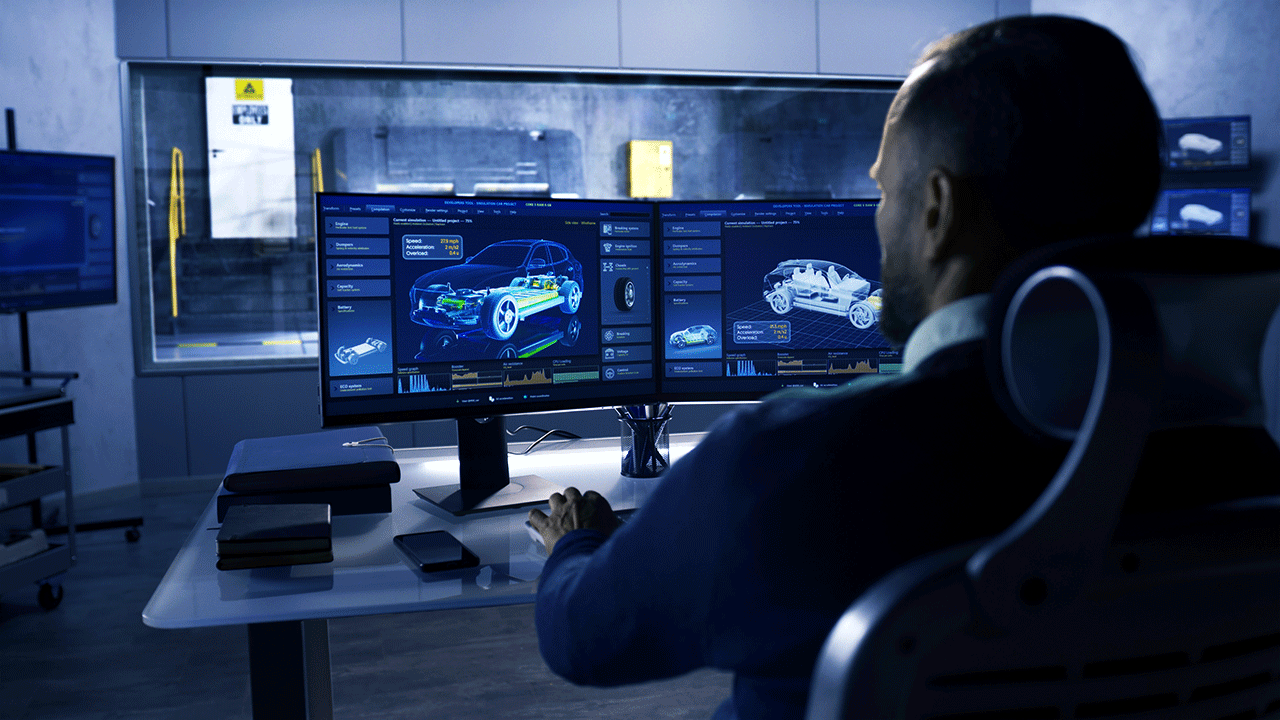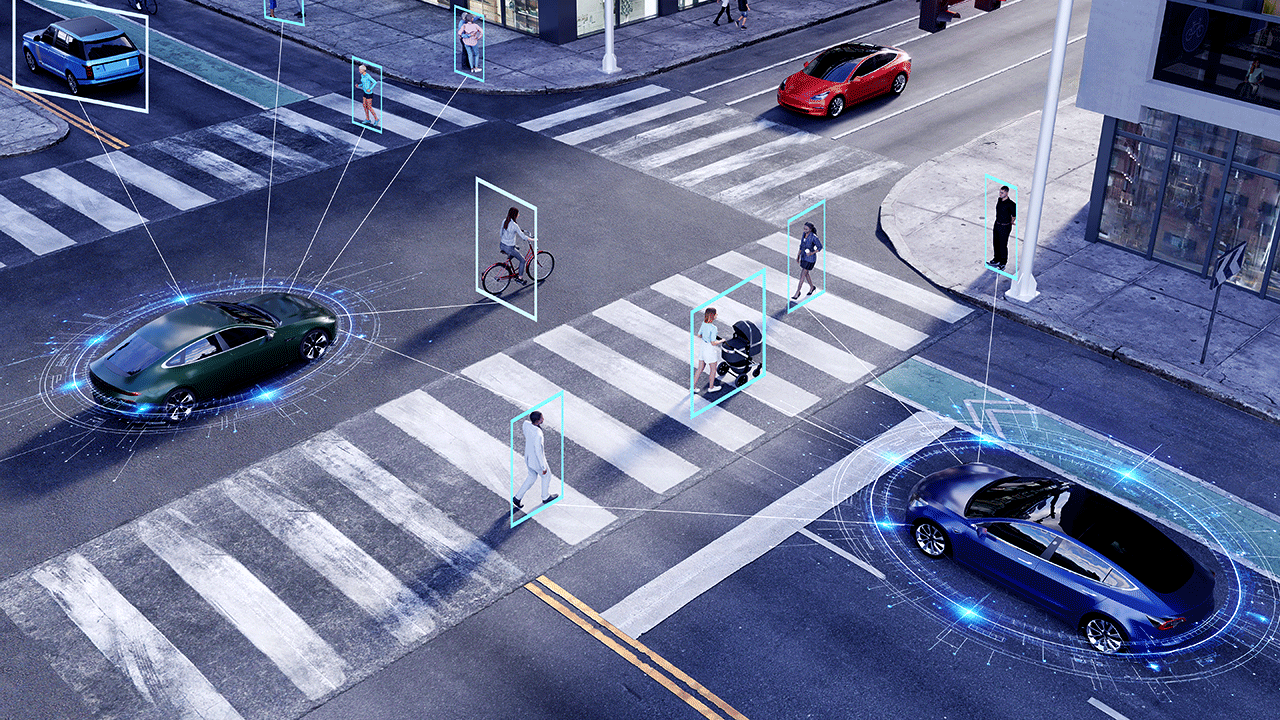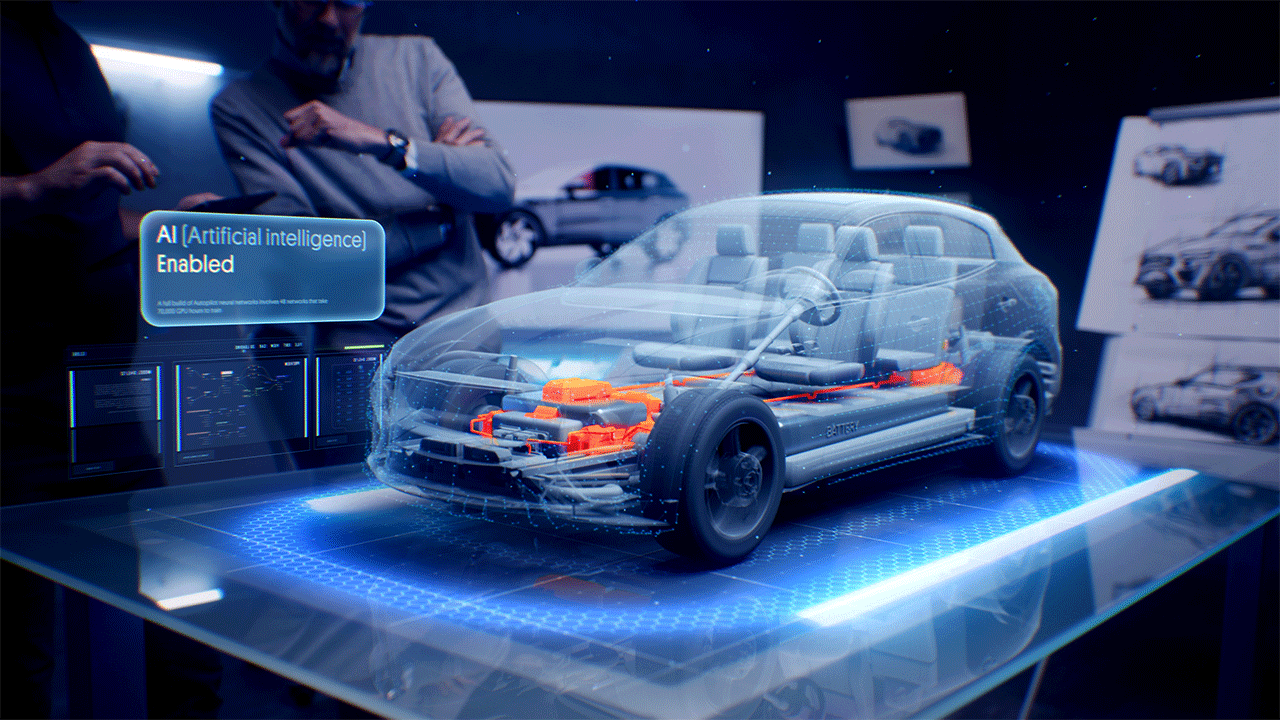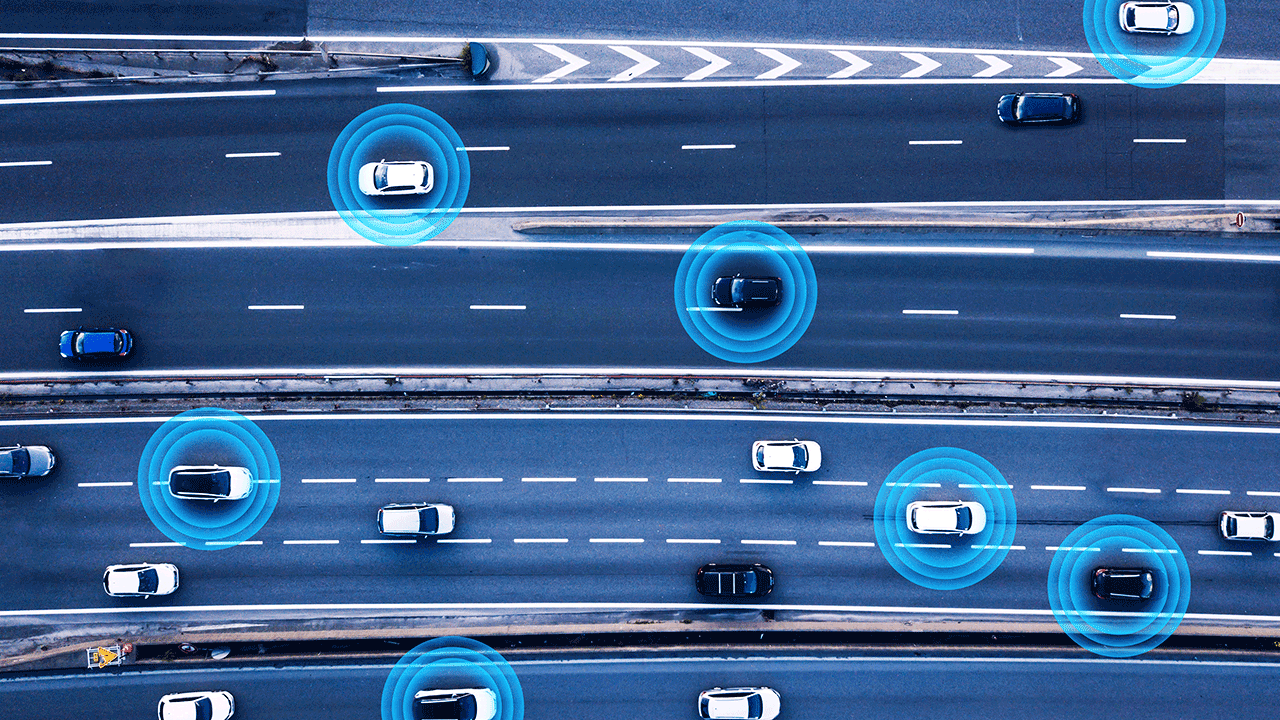1 min read
Embedded Software Development: How AI is Transforming Vehicle Safety?
Artificial Intelligence (AI) is no longer a side feature in vehicle safety and embedded software development. It is rapidly becoming the core driver...
Unlock Engineering Insights: Explore Our Technical Articles Now!
Discover a Wealth of Knowledge – Browse Our eBooks, Whitepapers, and More!
Stay Informed and Inspired – View Our Webinars and Videos Today!
Exploring the future of software-defined vehicles through expert insights.
7 min read
 Steve Neemeh
:
Oct 20, 2025 11:30:05 AM
Steve Neemeh
:
Oct 20, 2025 11:30:05 AM

Table of Contents
Implementing Responsible AI in Automotive Vehicle Safety requires more than algorithms and data. It demands a structured foundation or an AI framework that connects AI governance, system safety, and lifecycle management. This safety-related AI framework brings these elements together so that enterprise-level and product-level risks are managed consistently across the organization.
ISO/IEC 42001 establishes the first global standard for managing Artificial Intelligence within an organization. It defines how leadership, governance, and risk management processes are structured to ensure AI is used responsibly. For automotive companies, this means treating AI with the same rigor as quality and safety management systems. It creates accountability for managing data, models, and AI decisions across the enterprise. This standard forms the framework's foundation, ensuring AI governance is consistent and auditable from top to bottom.
ISO 26262 remains the cornerstone of automotive safety. It defines the processes used to design and validate electrical and electronic systems so that failures do not lead to unreasonable risk. In AI, ISO 26262 ensures that perception, control, and decision systems maintain safe behavior even when unexpected events occur. Every AI component that affects vehicle operation must be analyzed using the exact safety lifecycle and hazard analysis principles that apply to conventional systems.
While ISO 26262 covers faults and failures, ISO 21448 ensures the system is safe even when everything works as intended. This is especially important for AI systems that misinterpret unusual or ambiguous scenarios. SOTIF provides a structured approach for defining operational design domains, identifying potential unsafe scenarios, and validating system performance under uncertainty. It extends safety analysis to cover perception limitations, edge cases, and environmental variations.
ISO/PAS 8800 is the first standard to apply functional safety principles directly to AI. It introduces processes for verifying and validating machine learning models, managing data quality, and monitoring deployed AI systems over time. It also defines how to handle model retraining, continuous learning, and uncertainty management. For LHP, this standard represents the bridge between traditional safety engineering and modern AI development practices.
ISO/IEC 5338 defines a structured lifecycle for developing and maintaining AI systems. It aligns with systems engineering processes and ensures every stage, from data acquisition to model deployment and monitoring, is documented and traceable. The standard complements automotive safety practices by ensuring that AI components are developed with transparency, validation, and lifecycle accountability in mind. It connects AI design decisions directly to risk management and compliance processes.
ISO/IEC 5469 guides applying engineering discipline to AI systems. It includes model version control, interpretability, documentation, and explainability recommendations. These practices make AI behavior more predictable and auditable within the broader system context. Although published as a Technical Report, it is being replaced by ISO/IEC TS 22440, which will formalize these practices into a technical specification. It strengthens the link between AI model development and safety assurance in the automotive domain.
ISO 5083 provides the process framework for developing Advanced Driver Assistance Systems (ADAS) and Automated Driving Systems (ADS). It defines how requirements flow down from system design to validation and testing, including the integration of AI-based perception and control. The standard ensures that all automated systems are engineered consistently, tested for reliability, and validated for real-world performance. It serves as a blueprint for turning AI algorithms into certified automotive products.
These standards overlap, intersect, and likely contradict each other. Hence, it is important to set up a framework custom to your organization.
The takeaway is clear: Basic QMS (ISO 9001, etc.) and safety processes (ISO 26262) are not optional. They are the foundation for building your higher-risk AI-based products. Get certified to enable the use of AI.
AI has shifted from a curiosity to a mandate. Boardrooms are demanding efficiency gains. Engineers and the public are adopting the AI tools available at a pace I've never seen. Will the risks outweigh the rewards?
The EU AI Act, the world's first comprehensive AI regulation, sets the pace of regulation:
This staged rollout means companies do not have the luxury of waiting. Compliance is no longer theoretical. Deadlines are already on the calendar.
Alongside regulation, standards are maturing quickly:
By contrast, the United States is now taking a lighter, guidance-driven approach. The NIST AI Risk Management Framework (AI RMF 1.0), published in January 2023, provides voluntary guidance for trustworthy AI. President Biden's Executive Order on Safe, Secure, and Trustworthy AI (October 2023) directed federal agencies to set guardrails, but it stops short of binding obligations like the EU AI Act. The USA is in a deregulatory environment, so I don't see this strengthening over the next few years.
The takeaway: Europe is moving with binding regulation and enforcement, while the U.S. is advancing with voluntary frameworks and executive direction. Multinational corporations must prepare for the strictest regime because global supply chains and markets expect compliance at the EU level.
Markets are moving just as quickly. Analysts and investors are already rewarding companies that demonstrate they are making efficiency gains and de-risking early, while penalizing those that lag.
The automotive safety-related AI framework integrates these standards into four connected layers:
Together, these layers form a comprehensive framework that connects Responsible AI governance with established automotive safety processes. It enables companies to innovate confidently, knowing that structured safety and management practices support every AI development and deployment stage.
The takeaway: Standards fatigue is real and will continue for a generation. The answer is to take a holistic safety and management approach. How can you fund all this? Where will the money come from? Let's explore that.
The principles are simple:
This applies not just to engineering workflows but also to corporate ones, such as HR, finance, immigration, compliance, and IT.
Too often, teams claim they don't have time to write or refine requirements, but skipping this step only causes expensive rework later, and an abundance of quality issues and delays in product releases. AI now removes that excuse. Tools can draft requirements directly from design notes or customer inputs, check them against standards like ISO 26262, and structure them in consistent formats for downstream testing. That means higher quality requirements with less effort and faster cycles. That also means designers know what to do and are clear about outcomes.
AI-assisted coding is no longer a novelty. Tools like GitHub Copilot (and many more) help developers by suggesting entire functions, enforcing coding standards, and even flagging vulnerabilities in real time. This doesn't replace engineers but augments embedded and safety-critical software, letting them focus on logic and system design. At the same time, AI accelerates the repetitive parts, resulting in cleaner code, fewer bugs, and faster delivery.
Testing consumes the majority of lifecycle cost in safety-critical systems. AI can auto-generate test cases from requirements, run regressions continuously, and analyze massive volumes of test results to spot failure patterns. Combined with simulation and scenario replay, it can create an autonomous test stack:
This approach turns testing into a closed-loop system that scales with product complexity. The result is continuous validation, earlier defect detection, shorter certification cycles, and higher safety margins, all at a fraction of today's manual cost.
Corporate finance still burns thousands of hours on manual reporting, reconciliations, and compliance reviews. AI turns that into a continuous, automated pipeline. Reports can be generated instantly, compliance checks run in the background, and anomalies flagged proactively. Instead of chasing spreadsheets, finance teams focus on insights and decisions.
Most HR functions are documentation-heavy and repetitive, which is ideal for automation. Benefits administration, payroll queries, training compliance, and performance review documentation can all be streamlined with AI. Recruiting can be an important exception: attempts to automate hiring have produced biased outcomes, as Amazon famously learned. However, HR can shift from paperwork to people outside of recruiting by letting AI handle the repetitive load.
AI provides a method to automate any repetitive task. That is the foundation of efficiency and competitive advantage.
Consider the case of one fictitious American company in the transportation/manufacturing sector. Now imagine applying AI at scale to optimize the workforce. Functions like finance, HR, legal, and IT are heavily documentation-driven and repeatable (FLSA, EEO, OSHA, ERISA, HIPAA, ACA, NLRA, GAAP, Dodd-Frank, IRC, NIST, FISMA, etc). By automating reporting, reconciliations, contract review, compliance documentation, and internal analysis, SG&A could conservatively be reduced by 50%, with an "guesstimate" investment of $20 million USD.
The result is not just higher profitability, it's a flywheel. AI cuts corporate overhead, while engineering and product innovation remain fully funded (and more productive). Over time, this compounds into more substantial margins and stronger market leadership, the exact profile analysts reward with premium valuations.
Rather than fade while low-cost countries rise due to cheaper labor, American companies have a level playing field. Use AI to reinvent how engineering and manufacturing companies do business.
|
|
2024 Actuals |
AI enabled financials |
Comments |
|
Revenue |
$5.2B |
$5.2B |
Assume AI can’t help sales |
|
COGS |
$3.4B |
$3.4B |
No change to engineering and COGS |
|
SG&A |
$1.4B |
$0.7B |
Massive reduction in overhead |
|
EBITDA |
$1.1B |
$1.7B |
Up 55% |
|
NI % |
~9% |
~15% |
Not achievable without AI |
The takeaway: While companies address the use of AI inside road vehicles, they can optimize internally to achieve the margins needed to invest in the solution.
AI has leveled the playing field for American companies traditionally facing higher labor costs than offshore competitors. It provides a straightforward way to automate anything that is not innovation. Tasks that used to be outsourced for efficiency, such as documentation, testing, quality assurance, and repetitive engineering work, can now be automated locally through intelligent systems. This allows people to spend more time on creativity, systems integration, and real problem-solving.
The advantage is no longer about geography or cheap labor. It is about how intelligently the work is managed. AI gives high-cost regions the same scale and efficiency once limited to low-cost markets, while keeping control, security, and quality at home. This shift opens the door to a new kind of competitiveness, where companies can rebuild domestic strength through automation instead of relocation.

1 min read
Artificial Intelligence (AI) is no longer a side feature in vehicle safety and embedded software development. It is rapidly becoming the core driver...

1 min read
How is Automation through AI redefining efficiency and productivity in Engineering? Artificial Intelligence is no longer an experiment or a future...

Why is Safety at the Core of Software-Defined Vehicles? Creating technology can be a complicated and time-consuming process. At LHP Engineering...